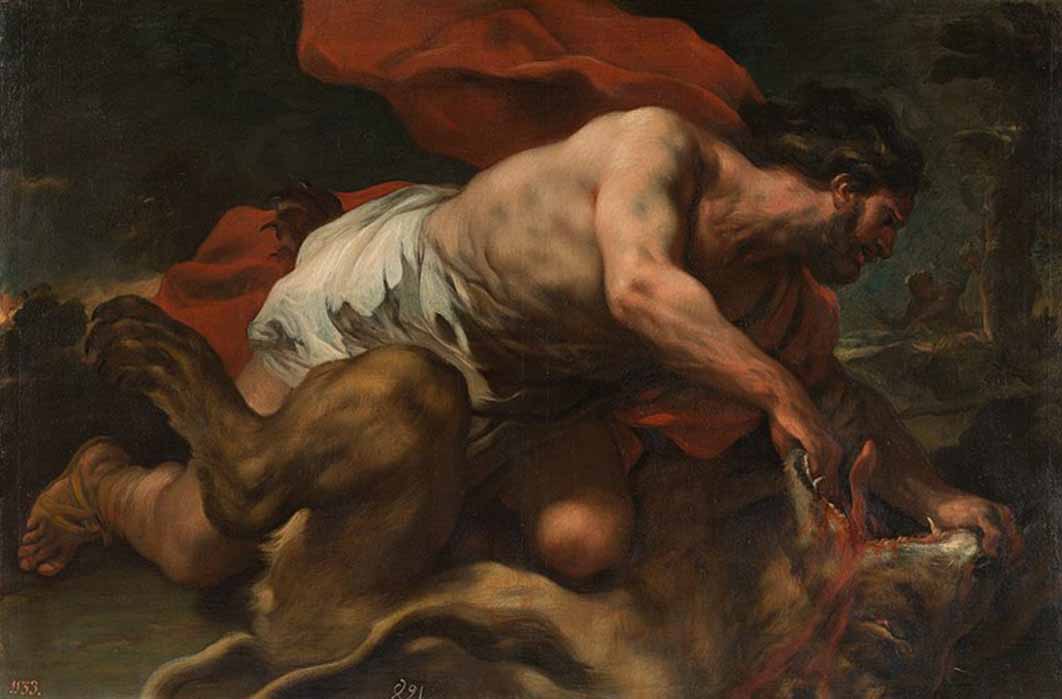
Metallurgical Key Unlocking Samson’s Lion Riddle
Biblical Samson challenged his wedding guests with a riddle: “Out of the eater came something to eat, and out of the strong came something sweet”. The simple answer is Samson was referring to a swarm of bees which had made a honeycomb inside the carcass of a lion he had previously torn apart with his bare hands in Timnah. But there is a deeper metaphor to be mined, using a metallurgical key, in the light of archaeological discoveries in the Timnah Valley (southern Israel), of an Egyptian shrine associated with ancient copper mines. The riddle might refer to a smelting furnace which “eats” the mineral with the fire, producing a dull noise, similar to the roar of the lion and the buzz of the bees in the hive, and the honeyed-colored copper gushing out. The recurring themes of the lion, the bees producing honey and fire can be found among various civilizations’ mythologies and spanning numerous epochs, starting from the Nemean lion slain by Hercules up to the famous ‘Sword in the Stone’ of King Arthur.

Chalcolithic copper mine in Timnah Valley (שומבלע /CC BY-SA 2.5)
The full biblical account of Samson’s narrative is found in the Book of Judges (14:1 – 14): “Samson went down to Timnah and saw there a young Philistine woman. When he returned, he said to his father and mother: ‘I have seen a Philistine woman in Timnah; now get her for me as my wife’… Samson went down to Timnah together with his father and mother. As they approached the vineyards of Timnah, suddenly a young lion came roaring toward him. The Spirit of the Lord came upon him in power so that he tore the lion apart with his bare hands as he might have torn a young goat. But he told neither his father nor his mother what he had done. Then he went down and talked with the woman, and he liked her. Some time later, when he went back to marry her, he turned aside to look at the lion’s carcass. In it was a swarm of bees and some honey, which he scooped out with his hands and ate as he went along. When he rejoined his parents, he gave them some, and they too ate it. But he did not tell them that he had taken the honey from the lion’s carcass. Now his father went down to see the woman. And Samson made a feast there, as was customary for bridegrooms. When he appeared, he was given thirty companions. ‘Let me tell you a riddle’, Samson said to them. ‘If you can give me the answer within the seven days of the feast, I will give you thirty linen garments and thirty sets of clothes. If you cannot tell me the answer, you must give me thirty linen garments and thirty sets of clothes’. ‘Tell us your riddle’, they said. ‘Let us hear it’. He replied: ‘Out of the eater came something to eat, and out of the strong came something sweet’”.

Mining cards from the Egyptian period, and mining chisels from the Chalcolithic period at the copper mine in the Timnah Valley (CC BY-SA 2.5)
The Metallurgical Key to the Metaphor
Besides the apparent strangeness of this story, the hidden meaning of this complex metaphor had been lost over time, until in the second half of the 20th century, when Israeli archaeologist Beno Rothenberg, excavating in the Timna Valley in Israeli territory, 30 kilometers (18 miles) north of the Gulf of Aqaba, discovered the remains of a copper mine, which was in continuous use from the Neolithic to the Middle Ages. In particular, he found an Egyptian shrine dedicated to Hathor, the goddess of mining, dating to the end of the 14th century BC. Thousands of hieroglyphics, sculptures and jewels brought to light proved its importance to the Egyptian miners.

Shrine of Hathor in the Timnah Valley (CC BY-SA 2.5)
The discovery of the copper mine in the same Timnah valley where Samson killed his lion, provides the metallurgical key to unlock the metaphor, as the smelting furnace seems “to eat”, “to devour” the mineral with fire, producing a dull noise which is similar both to the roar of the lion and the buzz of the bees in the hive, and then the copper gushes out, which actually has a color similar to that of wild honey!




